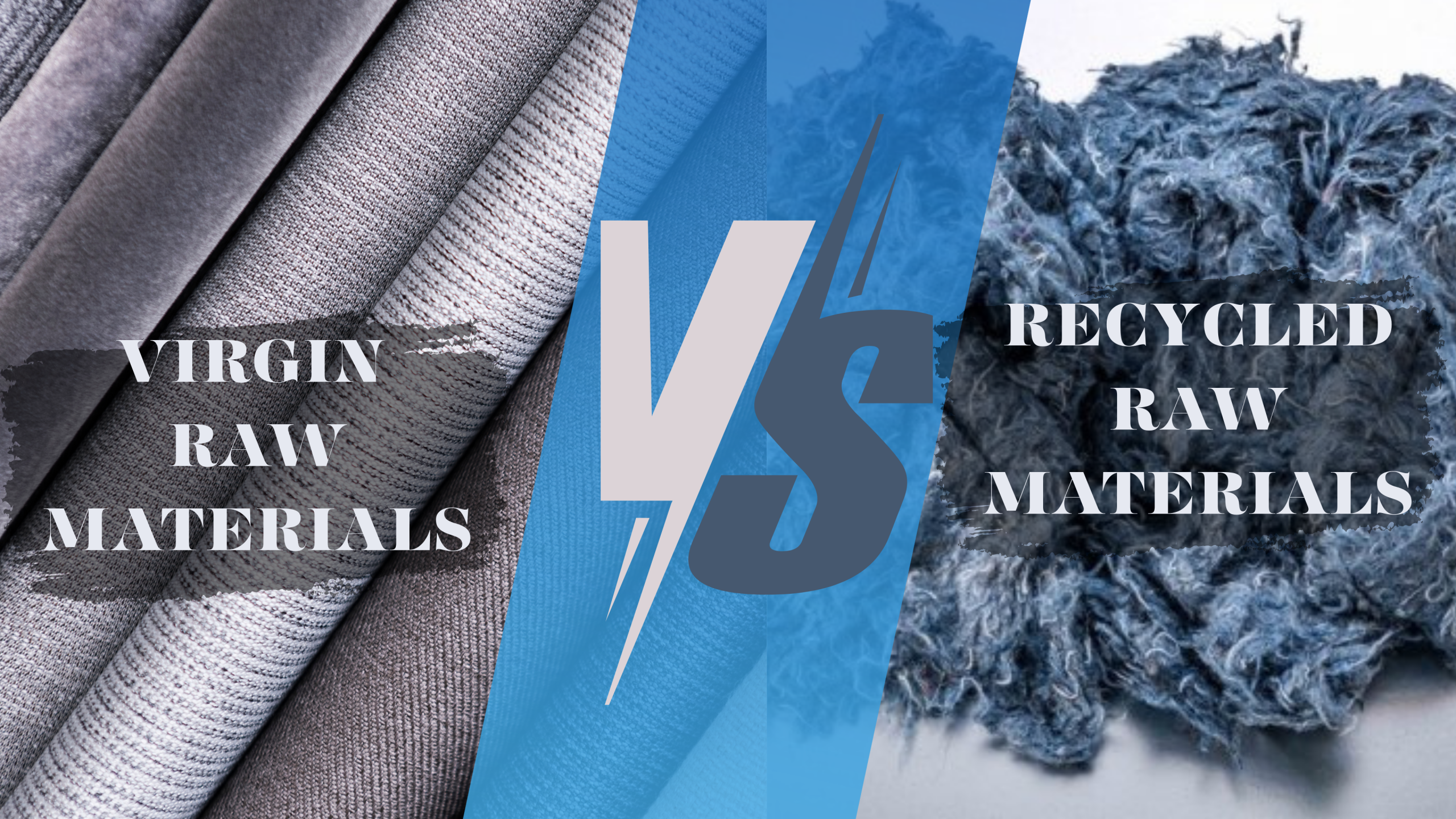The textile industry is navigating a complex shift from traditional virgin raw materials to recycled fibers. Both materials hold critical roles today, but the landscape is changing due to rising environmental concerns, technological advances, and market pressure for sustainable options. Here’s a detailed, data-backed look at where virgin and recycled textile raw materials stand today, the challenges they face, and the trends shaping their futures. The global textile fiber market is vast and changing. In 2023, worldwide fiber output reached 124 million tonnes. Polyester dominates this production, making up 57% of total fiber use, while cotton accounts for roughly 20% (around 24 million tonnes). Other fibers make up the remaining 23%.
Current Market State
The Role of Recycled Fibers Today
Recycled fibers represented about 7.7% of the total fiber use in 2023. Of that, recycled polyester (rPET) alone contributed nearly 7.0%, making it the largest component within recycled materials. However, textile-to-textile recycling, which involves turning old textiles directly into new ones, still makes up less than 1% of the feedstock, highlighting the limited scale of true circular textile recycling today.
Nearly 99% of recycled polyester originates from PET bottles, not old clothes. This means the current recycling landscape largely focuses on bottle-to-fiber rather than closing the loop within textiles themselves.
Market Pricing and Cost Differences
Cost is a significant factor holding back wider adoption of recycled fibers. As of April 30, 2025, in Europe, food-grade rPET pellets were priced at approximately €1,680 per metric ton. This is €686 higher per ton than virgin PET, which was roughly €994 per ton on the same date. Brands often face this premium pricing when opting for recycled materials, reflecting supply-demand imbalances and recycling costs.
In the U.S., the cost premium on rPET widened again in 2024, with estimates placing it around 30–35% higher than virgin PET through early 2025.
Regulatory Environment and Policy Drivers
The European Union is driving change through regulation. By January 1, 2025, separate collection of textiles became mandatory, aiming to improve recycling feedstock quality and quantity. A provisional agreement enforces Extended Producer Responsibility (EPR), requiring producers to finance textile collection, sorting, and recycling systems. Digital Product Passports (DPPs) will be mandated under the EU’s Eco-design law, enhancing transparency and traceability from production to end-of-life
Key Challenges and Practical Solutions
Cost Premium: The rPET price premium challenges price-sensitive markets. Strategic approaches include securing multi-year offtake agreements, blending different rPET grades depending on application, and using price escalation clauses tied to energy and raw material costs. Across 2025 snapshots in Europe, rPET often carries a €600–700/mt higher to virgin PET, which slows adoption in price-sensitive lines
Traceability and Claims: Bottle-to-fiber claims often lead to confusion and greenwashing risks. Recycled Claim Standard (RCS) and Global Recycled Standard (GRS) chain-of-custody certifications help ensure authenticity. Digital Product Passports will reinforce transparency by carrying detailed material and lifecycle data.
Scaling Textile-to-Textile Recycling: Less than 1% of fibers are recycled from post-consumer textiles, though pilot sites grow. Mechanical recycling suits cotton pre-consumer waste, while chemical recycling is gaining ground for polyester monomer recovery. Companies like Eastman and Carbios are expanding capacity in molecular recycling and enzymatic depolymerization.
Infrastructure unevenness
Collection is rising, but quality pre-sorting, regional sorting hubs, and local re-manufacturing are still catching up. Export flows and informal channels add more complexity for EU value chains
Strategies to Address Key Challenges
Lock supply deliberately
Sign multi-year offtake with recyclers for rPET pellets and high-grade flakes; tie volumes to bale indices and energy to share risk. The aim is to smooth the rPET–virgin delta that S&P flags.
Design for recycling up front
Standardize single-polymer bodies where possible; keep elastane under tight thresholds; specify easily removable trims and labels; avoid deep disperse shades if you plan chemical-recycling routes. This directly improves sortability and yield (and will map cleanly into DPP fields).
Sort smarter
Fund or partner on NIR-based automated sorting and color/fiber ID. Use EPR channels to pilot pre-sorting by mono-material and by color, which lifts both mechanical cotton recycling and chemical polyester depolymerization rates.
Be precise with claims
Require RCS/GRS chain-of-custody in contracts today; prepare datasets for DPP tomorrow. Build a single source of truth for fiber content, chemistry, repairability, and end-of-life guidance so your product IDs are DPP-ready.
Pilot textile-to-textile where it fits
Use mechanical recycling for clean pre-consumer cotton waste; use chemical depolymerization for polyester where you can secure capacity. Track early capacity at Eastman Kingsport (operational since early 2024, ~110,000 t/y molecular recycling) and European enzymatic/methanolysis projects as they scale.
Virgin materials still set the baseline on price and scale, while recycled inputs move forward on the strength of policy and contracting. The data shows why: recycled content is growing from a small base, rPET often carries a premium, and true textile-to-textile volumes are still early. The rules arriving in Europe separate collection, producer responsibility, and product passports—will tilt the field toward recyclability, traceability, and real end-of-life plans.
The smart move isn’t to wait for perfect tech or perfect prices. Lock supply with multi-year offtakes. Design products that sort and recycle cleanly. Fund better sorting where you source. Document claims with chain-of-custody now and DPP-ready data next. Pilot textile-to-textile where the specs are stable uniforms, workwear, core programs and scale what works.
